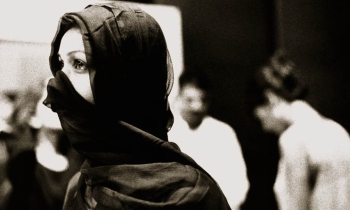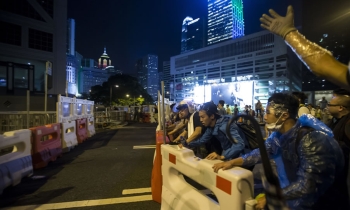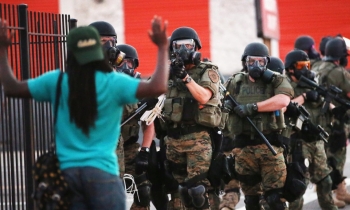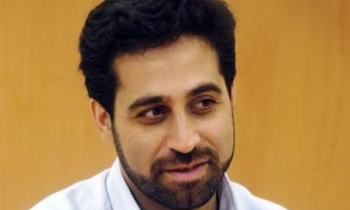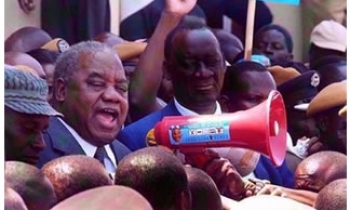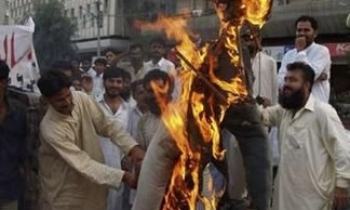The victims of last year's war between Hezbollah and Israel –on both sides– were treated as statistics not people. Although human victims of the war were mentioned in one out of every five articles, they were mostly covered as mere facts and figures. Almost 91 per cent of the articles covered killed and wounded civilians in a very or somewhat impersonal manner, a new study has found.
Civilian casualties received substantially more attention than military casualties, and coverage of both focused on figures and facts. Little coverage emphasised the pain and suffering of the victims and their families.

The findings are from a study conducted by the International Centre for Media and the Public Agenda (ICMPA) at the University of Maryland that looked at the 2006 war between Hezbollah and Israel. The study looked at 14 major English-language newspapers from around the world. It tracked their overall coverage, changes in coverage over time, and ranked them according to authority, depth, source balance, frame balance and empathy. The study report was released on July 30, which coincided with the Qana attack in 2006.
One-fifth of the articles analysed were reported from Lebanon, and another one-fifth were reported from Israel. The study found that 46 per cent of the articles were critical of Israel, and 51 per cent of Hezbollah. Although Lebanon is the home country of Hezbollah, the reporters did not blame the Lebanese: 50 per cent of the articles were sympathetic to Lebanon, and only 4 per cent were critical.
The ICMPA study noticed that most newspapers focused on their own leaders' diplomatic activities. Only 10 per cent of articles dealt with the political negotiations between the fighting parties. Most coverage focused on the military and diplomatic aspects of the war. Only 2 per cent focused on economic damage and 1 percent on environmental destruction. Only 10 percent of stories covered aid and humanitarian relief efforts and/or refugees.
About two-thirds of all articles studied referenced killed and/or wounded-but only by numbers. Half of those included casualty figures for both soldiers and civilians. The articles that mentioned only the number of dead and wounded civilians accounted for 23 per cent of the coverage. Only 11 percent of articles mentioned the number of killed and wounded soldiers (including Hezbollah fighters) alone.

Both Israeli and Lebanese civilian casualties were presented in a very or somewhat impersonal manner, the ICMPA study found. Barely 11 per cent of articles covering Lebanese victims and 8 per cent of those covering Israeli victims were somewhat or very personal. Military casualties were presented in an even more impersonal manner. Fewer than 5 per cent of Israeli military casualties and almost none of Hezbollah’s military casualties were presented in a personal manner. In addition, among all articles that mentioned casualties (both military and civilian), only 12 per cent mentioned any of their names, and only 13 per cent mentioned anything about their relatives or other survivors.
Overall, Israeli soldiers got more coverage than Hezbollah fighters, at a 6:1 ratio. UN casualties during the war received only 7 per cent of the coverage. Almost 6 per cent of all articles mentioned Palestinian civilian casualties, and about 2 per cent also mentioned Palestinian military casualties.
The newspapers/agencies tracked were Daily Star (Lebanon), the Los Angeles Times, the Independent (UK), Financial Times (UK), the New York Times, the Nation (Pakistan), Herald Sun (Australia), the Press Trust of India (India), Turkish Daily, Irish Times, the South China Morning Post, the Washington Post, Jerusalem Post (Israel), the Guardian (UK).
The coverage differed from one media outlet to another, and some did better than others. The Washington Post, Financial Times and the Nation (Pakistan) received the highest scores for balance. Financial Times had the highest level of authority, and the New York Times scored highest in depth of coverage. Although none of the news sources received perfect scores for covering the human victims of war, the Washington Post, the Los Angeles Times and the Daily Star received the highest marks for empathetic coverage of victims.

The coverage itself too kept changing. At the beginning of the war, the coverage was mostly sympathetic to Israel and highly critical of Hezbollah. On July 30, the day an Israeli air strike on the Lebanese village of Qana killed 27 civilians, the trend started to reverse, the ICMPA researchers observed. By the time Hezbollah scored a direct hit on Kfar Giladi on August 6 killing 12 Israeli soldiers, media coverage had shifted; the press became more neutral of both the fighting and the politicians on both sides. This change was in Lebanon's and Hezbollah's advantage. Overall coverage of Israel remained positive, but not as much as at the start of the conflict. This, the researchers concluded, was the Qana-effect.
The project was conducted over the fall and spring semesters of 2006-2007. It was designed and directed by Jad Melki, ICMPA's Research Director, supervised by Susan Moeller, ICMPA's Director, and edited by Paul Mihailidis, ICMPA's Director of Media Education Initiatives. Towson University seniors enrolled in the Research Methods class at the Communication & Mass Communication Department coded and analysed the news material. Partial funding for the project was provided by the College of Fine Arts and Communications at Towson University and by the Philip Merrill College of Journalism at the University of Maryland.

